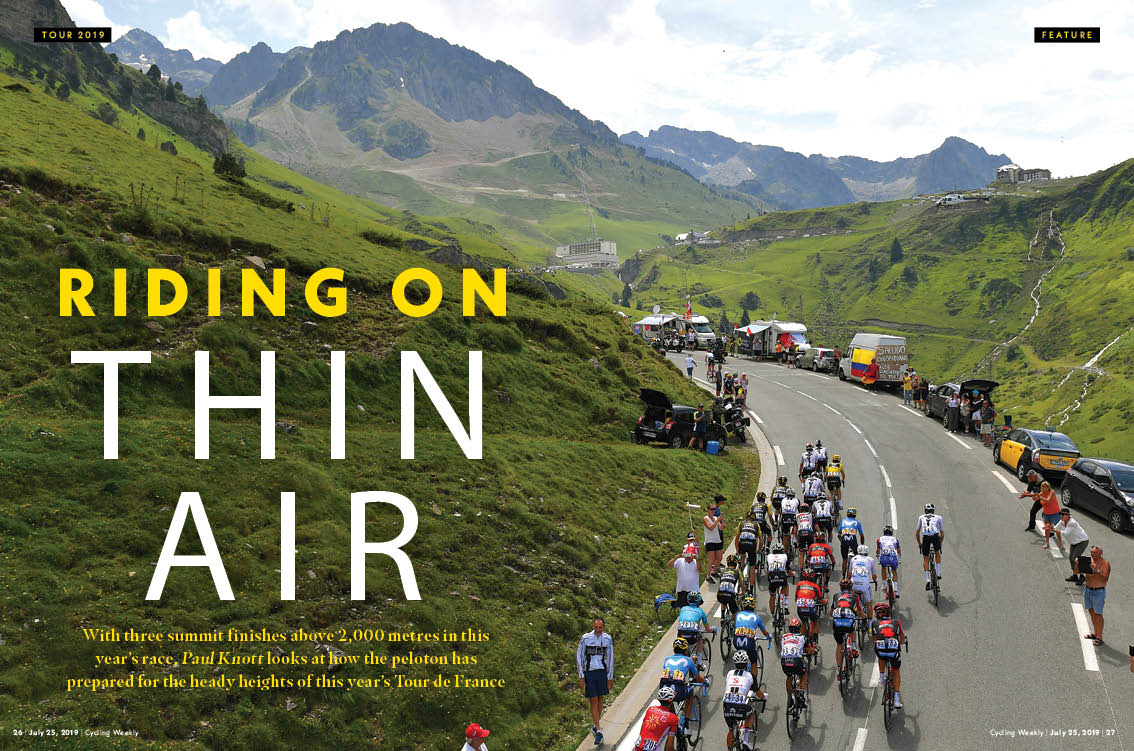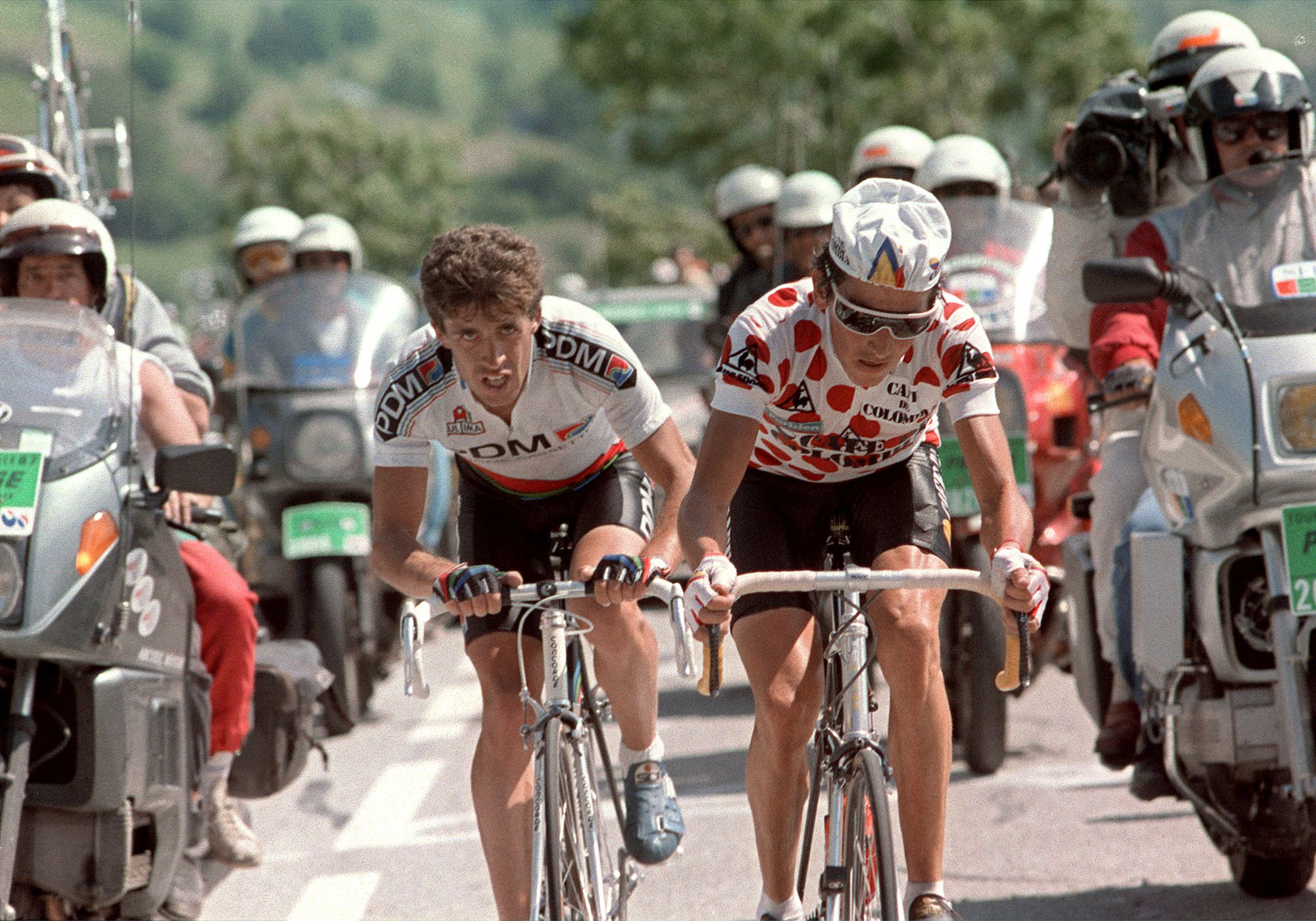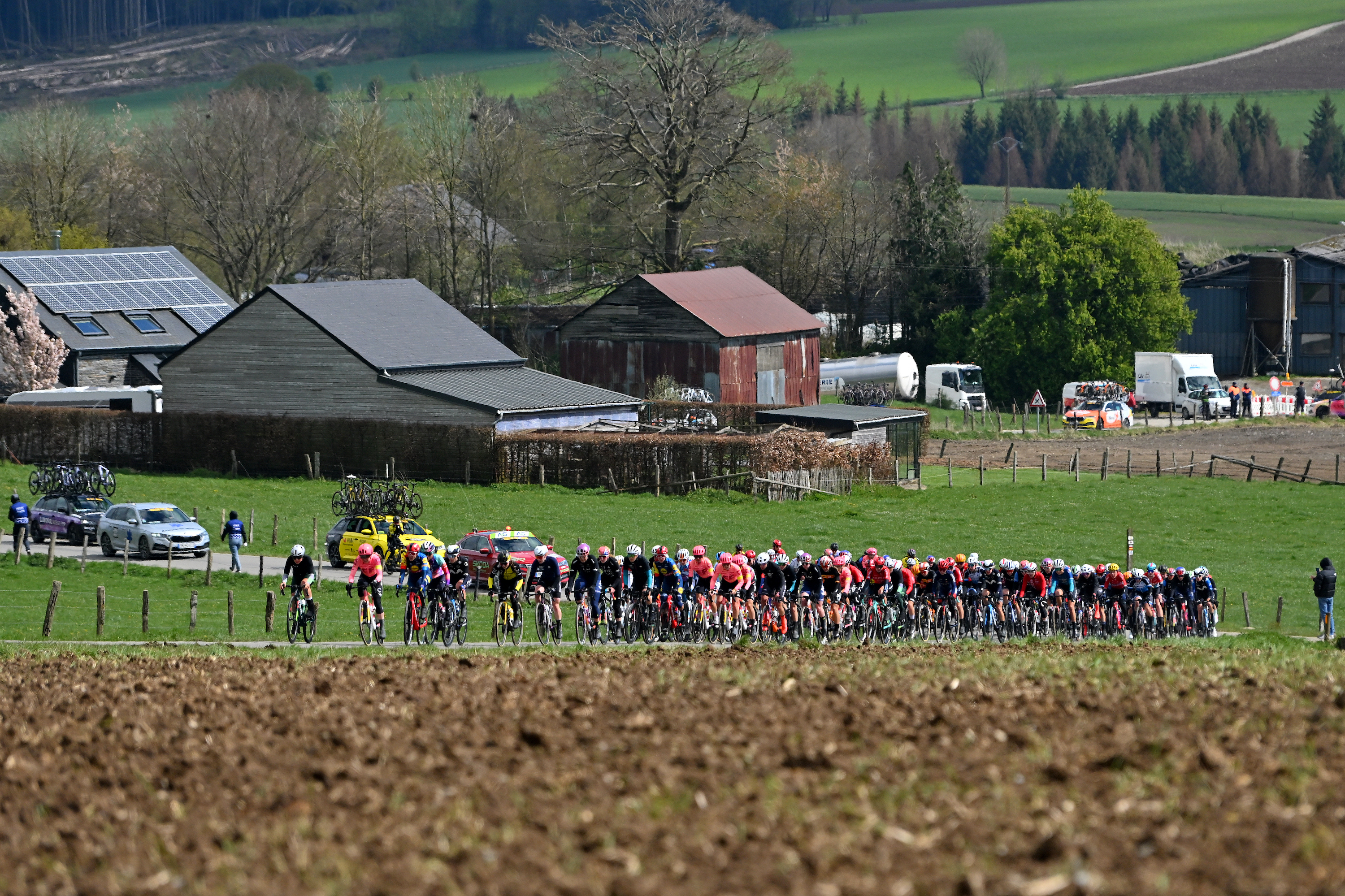Riding on thin air - how Tour riders deal with high altitude

With three summit finishes above 2,000 metres in this year’s race, Paul Knott looks at how the peloton have prepared for the heady heights of this year’s Tour
The high-altitude aspect of the race is going to be a significant factor,” four-time champion Chris Froome replied when asked his thoughts about the 2019 Tour de France route. Alas the four-time winner never made it to the Grand Départ in Belgium this year, let alone the mountain ranges, due to his crash at the Critérium du Dauphiné, but the same thinking will have influenced the build-up for each of the 176 riders who lined up in the lowlands of Brussels.
>>>> Subscribe to Cycling Weekly magazine with our 6 four £6 introductory offer
This year the peloton has to tackle three summit finishes that are over 2,000 metres elevation: the Col du Tourmalet on stage 14, Tignes on stage 19 and the final showdown up to Val Thorens on
Stage 20. It isn’t just the summit finishes either, as there are four other peaks that head over that notable marker, including the Col de l’Iseran at 2,770 metres — location of this year’s Souvenir Henri Desgrange, the prize awarded to the first rider to reach the highest point of the race.

According to Ineos’s head of athlete performance Tim Kerrison: “There is a bigger requirement than ever to perform at altitude. Because of the complexity with different riders on different programmes, each altitude training block is unique for each rider.”
“We started the year in Colombia, which included Egan [Bernal] and [Jonathan] Castroviejo from the Tour team. They were there for three weeks, but obviously Egan lives at altitude in Colombia and one of the ways we manage his schedule is that when he is in Europe he spends time at medium altitude between races in Andorra.” That’s the same place both Yates brothers have relocated to in recent years to spend as much time as possible in the thin air.
Get The Leadout Newsletter
The latest race content, interviews, features, reviews and expert buying guides, direct to your inbox!
Whereas Bernal and the Yateses have the home comforts of altitude, Geraint Thomas must carefully plan his stints at high altitude throughout the year.
“Geraint had four blocks scheduled this year in Tenerife, one in February with Ben Swift where Ben unfortunately had a nasty crash,” Kerrison says. “But he did an incredible block of work up there for 10 or 12 days at altitude. He then had another one planned but the weather was really poor so he came back and then we did a two-week block in April and a two-week block in May up Mount Teide.”
These April and May camps in Tenerife are crucial for Ineos’s Grand Tour preparations, with tried and tested camps used for final and early preparations for Giro d’Italia and Tour de France campaigns. It’s also about heat acclimatisation and team building before coming back down to race build-up races such as the Tour of the Alps for the Giro or Tour de Suisse for the Tour de France.
“Sometimes between that period and the Tour we’ll do recons and altitude top-ups,” says Kerrison. “Or we’ll do a little bit of a block at Isola 2000, which is close to Nice where most of the guys live and they can drive up and are at 2,000m within an hour and a half of home.”
Read the full feature in this week's Cycling Weekly magazine, available in print in newsagents and supermarkets, priced £3.25

Thank you for reading 20 articles this month* Join now for unlimited access
Enjoy your first month for just £1 / $1 / €1
*Read 5 free articles per month without a subscription

Join now for unlimited access
Try first month for just £1 / $1 / €1
Paul Knott is a fitness and features writer, who has also presented Cycling Weekly videos as well as contributing to the print magazine as well as online articles. In 2020 he published his first book, The Official Tour de France Road Cycling Training Guide (Welbeck), a guide designed to help readers improve their cycling performance via cherrypicking from the strategies adopted by the pros.
-
 Colombian climbing star and former Vuelta a España winner Lucho Hererra could be investigated over murders of four people
Colombian climbing star and former Vuelta a España winner Lucho Hererra could be investigated over murders of four peopleA judge has called for an investigation into the former Vuelta winner who is alleged to have worked with paramilitary groups in Colombia
By Tom Thewlis
-
 I rode the full course of Liège-Bastogne-Liège and it opened my eyes to the beauty of this under-appreciated race
I rode the full course of Liège-Bastogne-Liège and it opened my eyes to the beauty of this under-appreciated raceFlanders and Roubaix have been and gone. Forget about them – some of the most epic racing of this Classics season is on the horizon
By James Shrubsall